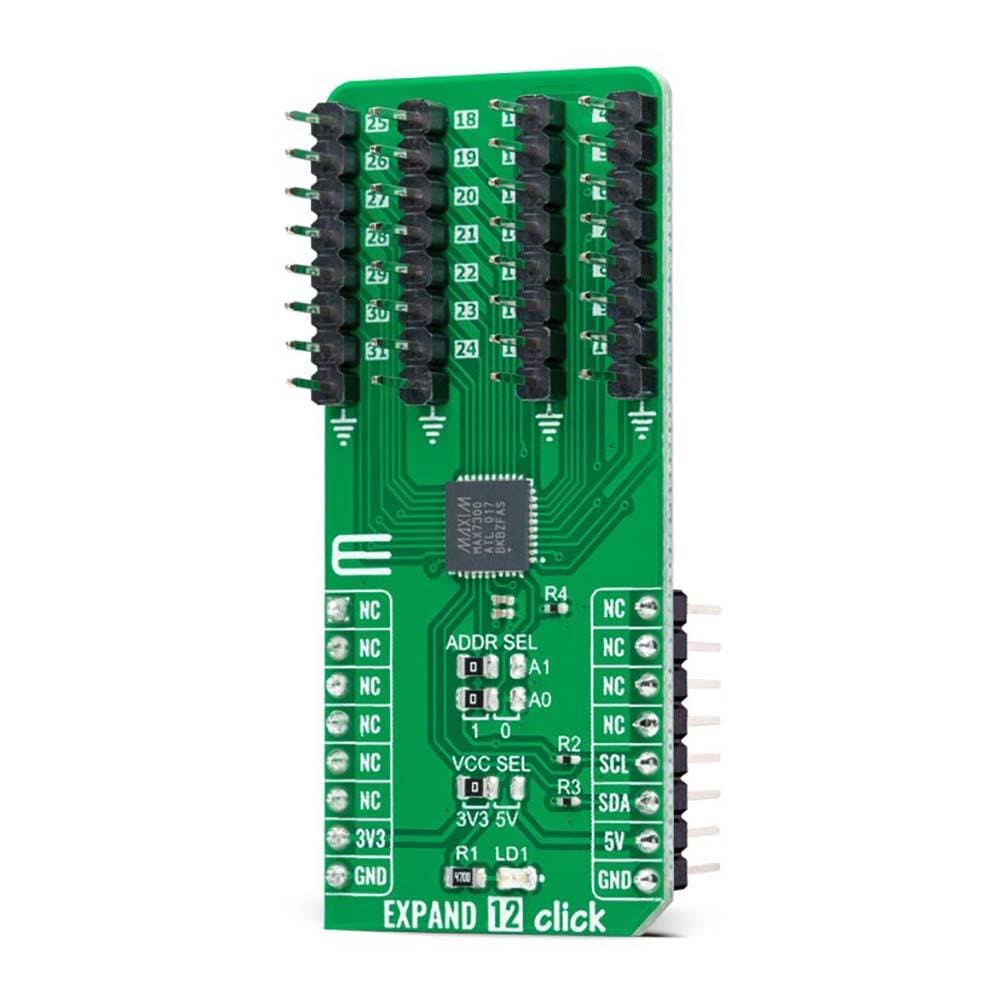

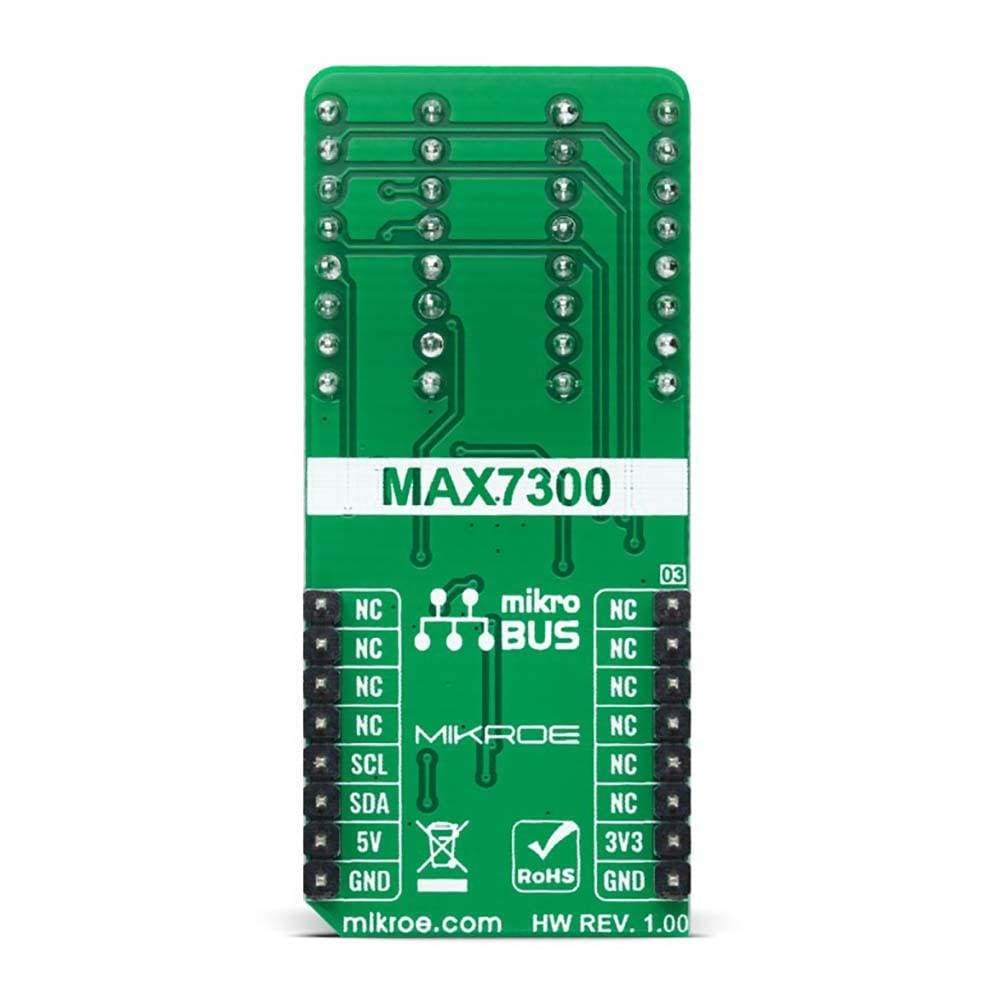
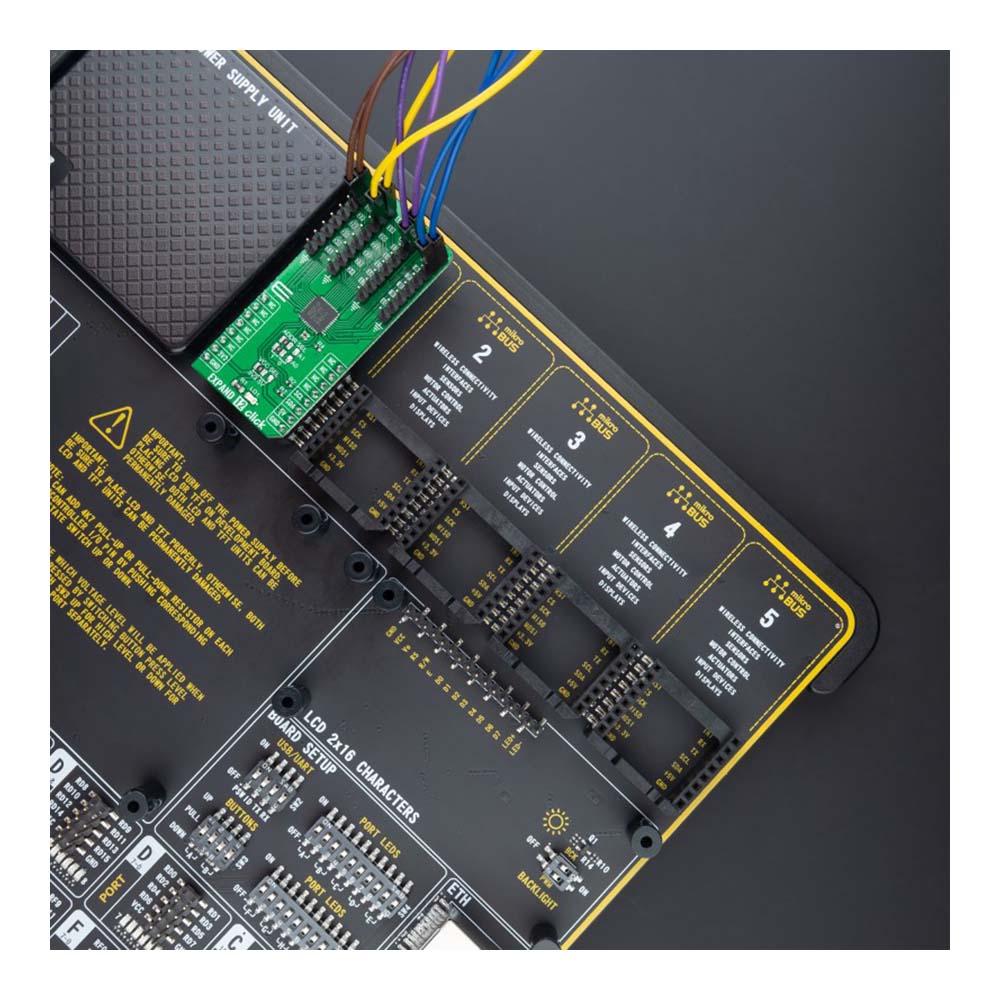
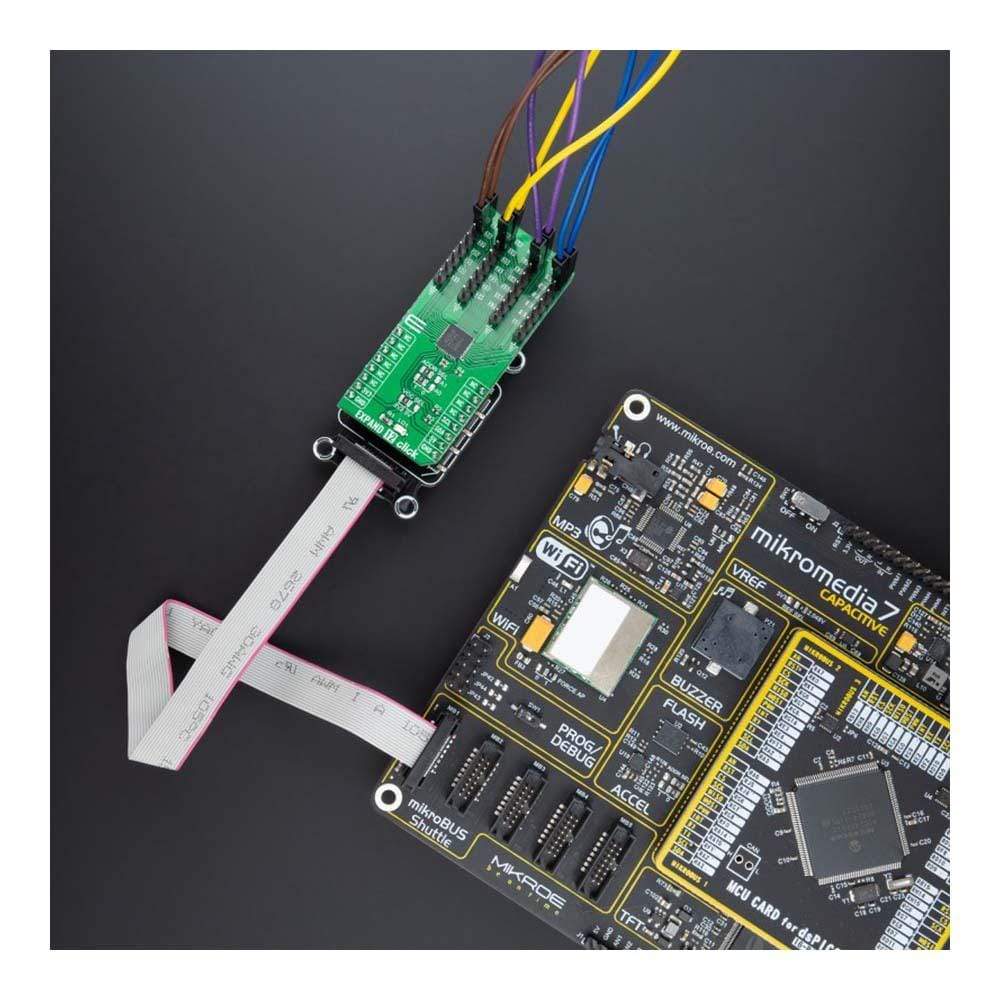
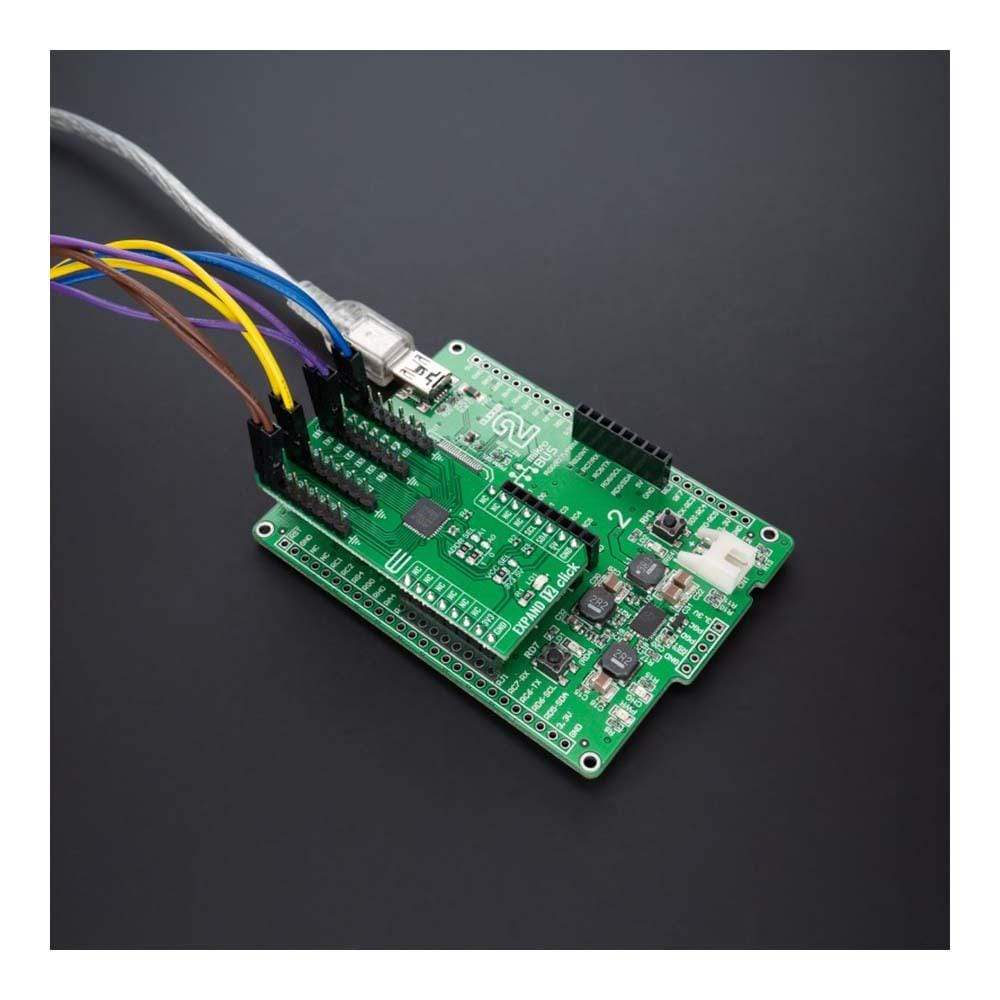
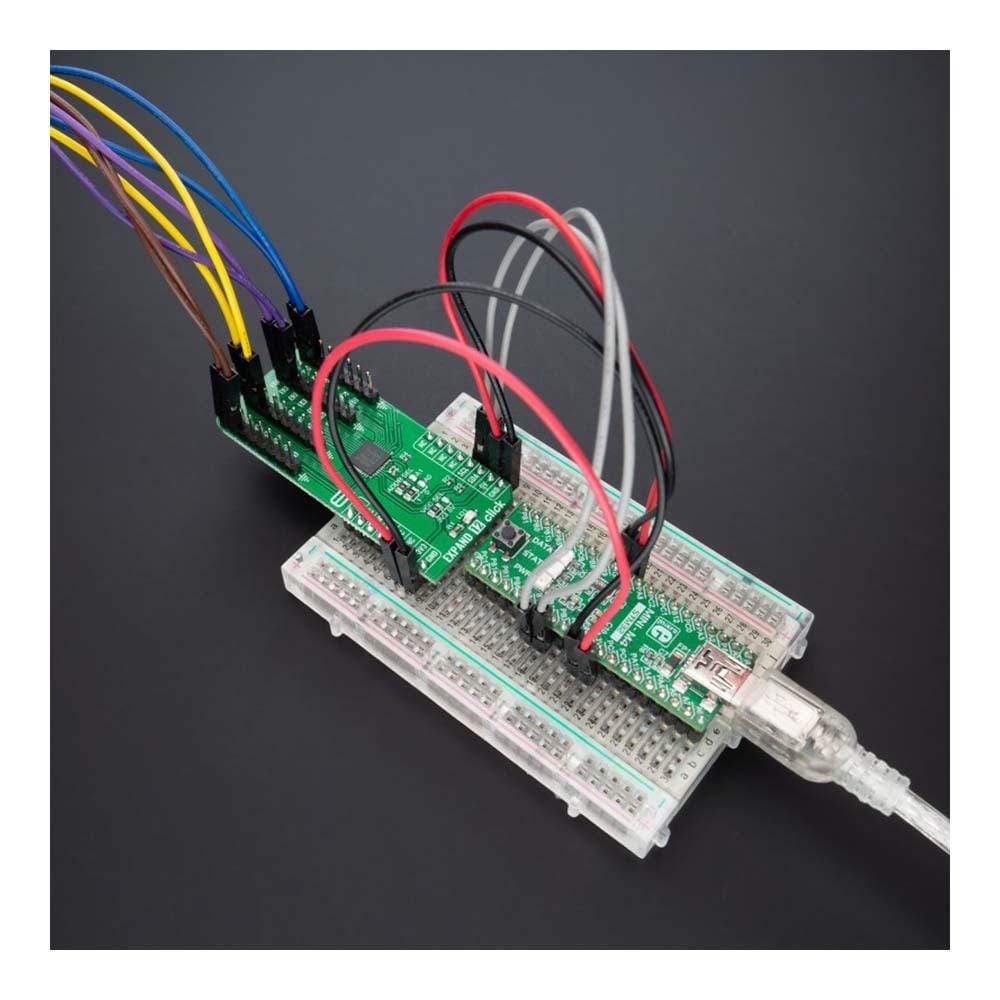
Key Features
Overview
The Expand 12 Click Board™ is a compact add-on board that contains a multi-port I/O expander. This board features the MAX7300, a general-purpose I/O expander providing remote I/O expansion for most MCU’s families from Maxim Integrated, now part of Analog Devices. The MAX7300 comes in a 28-port configuration and allows easy addition of I/O through a standard I2C serial interface. Each port is user-configurable to either a logic input or logic output, capable of sinking 10mA and sourcing 4.5mA. In addition, seven ports feature configurable transition detection logic, which generates an interrupt upon change of port logic level.
The Expand 12 Click Board™ provides a simple solution when additional I/Os are needed while keeping interconnections to a minimum in system monitoring applications, industrial controllers, portable equipment, and many more.
Downloads
Le Développez 12 Click Board™ est une carte complémentaire compacte qui contient un extenseur d'E/S multiport. Cette carte comprend le MAX7300, un extenseur d'E/S à usage général fournissant une extension d'E/S à distance pour la plupart des familles de microcontrôleurs de Maxim Integrated, qui fait désormais partie d'Analog Devices. Le MAX7300 est disponible dans une configuration à 28 ports et permet d'ajouter facilement des E/S via une interface série I2C standard. Chaque port est configurable par l'utilisateur en entrée logique ou en sortie logique, capable de recevoir 10 mA et de fournir 4,5 mA. De plus, sept ports disposent d'une logique de détection de transition configurable, qui génère une interruption lors du changement du niveau logique du port.
Le tableau Expand 12 Click Board™ fournit une solution simple lorsque des E/S supplémentaires sont nécessaires tout en réduisant les interconnexions au minimum dans les applications de surveillance du système, les contrôleurs industriels, les équipements portables et bien d'autres.
| General Information | |
|---|---|
Part Number (SKU) |
MIKROE-4889
|
Manufacturer |
|
| Physical and Mechanical | |
Weight |
0.02 kg
|
| Other | |
Country of Origin |
|
HS Code Customs Tariff code
|
|
EAN |
8606027384332
|
Warranty |
|
Frequently Asked Questions
Have a Question?
Be the first to ask a question about this.







